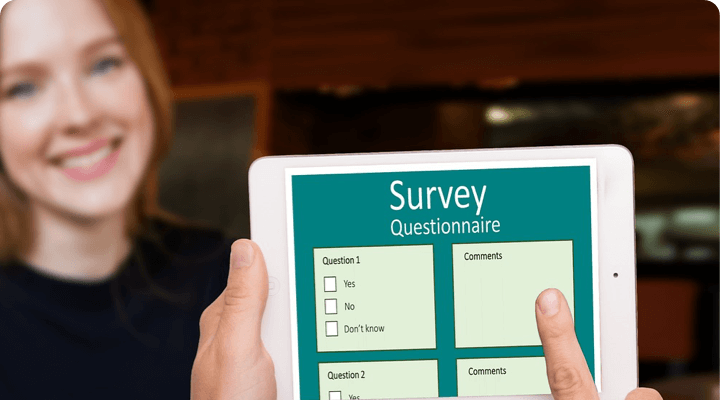Top Product Survey Questions to Ask with Examples

What makes a good product survey question, and how can you guarantee you're asking the right ones?
There are countless ways to gather customer feedback, but few methods are as direct and insightful as thoughtfully-crafted product survey questions. Consumer preferences can shift so fast and the ability to ask the right questions, as well as interpreting the answers correctly, can make or break a product's success.
The Importance of Good Product Survey Questions
When done right, these questions can:
● Learn hidden customer needs
● Identify areas for product improvement
● Assess customer satisfaction levels
● Inform pricing strategies
● Guide marketing efforts
Conversely, poorly constructed product survey questions can lead to biased or useless data that is wasting both your time and your customers'.
Types of Product Survey Questions
Some of the most common and effective types are:
1. Demographic Questions
While not directly related to your product, they provide context for other responses and can help you segment your audience.
Examples:
What is your age range?
What is your occupation?
In which country do you reside?
2. Product Usage Questions
It tells you how customers interact with your product. Plus, it can reveal usage patterns or potential pain points.
Examples:
How often do you use our product?
In what context do you typically use our product?
Which features do you use most frequently?
3. Satisfaction Questions
If you want to gauge how happy customers are with your product, ask them this to identify your areas of strength and weakness.
Examples:
On a scale of 1-10 how satisfied are you with our product?
How likely are you to recommend our product to a friend or colleague?
What aspect of our product do you find most satisfying?
4. Feature-Specific Questions
Ask this to understand which features are hits and which might need improvement.
Examples:
How useful do you find the new search function?
What additional features would you like to see in our product?
If you could change one thing about our product, what would it be?
5. Comparison Questions
How does your product stack up against the competition?
Examples:
How does our product compare to similar products you've used?
What made you choose our product over alternatives?
Are there any features our competitors offer that you wish we had?
Tips to Remember When Creating Product Survey Questions
Follow these principles to craft the best product survey questions:
Be Clear
Avoid ambiguity and keep questions short. For example, instead of asking "What do you think about our product's user interface and how it compares to other similar products you may have used in the past?", simply ask "How would you rate our product's user interface?"
Avoid Leading Questions
You should not phrase questions in a way that suggests a particular answer. For instance, instead of "Don't you think our new feature is amazing?" since that implies that the respondent agrees.
Use a Mix of Question Types
Combine open-ended and closed-ended questions to get both quantitative and qualitative data.
Keep It Relevant
Every question should serve a purpose in your survey so if you can't explain why you're asking something, it probably doesn't belong in your survey.
Consider the User's Perspective
You should frame questions in a way that makes sense from the customer's point of view.
Examples of Effective Product Survey Questions
Let's look at some specific examples of product survey questions that follow these principles:
● "What problem does our product solve for you?"
● This open-ended question gets to the heart of your product's value proposition.
● "How easy was it to start using our product?"
● This question can reveal potential onboarding issues.
● "If our product wasn't available, what would you use instead?"
● This helps you understand your competition and your product's unique selling points.
● "What's the one feature you couldn't live without?"
● This identifies your product's most valuable aspects.
● "If you could add any feature to our product, what would it be?"
● This question can spark ideas for future development.
● "How likely are you to continue using our product in the next 6 months?"
● This helps gauge customer loyalty and potential churn.
● "What's the biggest benefit you've experienced from using our product?"
● This question can provide powerful testimonial material.
● "How well does our product integrate with your existing tools and workflows?"
● This can highlight potential friction points in the user experience.
● "What was your main hesitation before deciding to use our product?"
● This can reveal barriers to adoption that your marketing might need to address.
● "If you could describe our product in one word, what would it be?"
● This can provide insights into overall brand perception.
Analyzing Survey Results

The real work begins once you've gathered responses to your product survey questions.
Look for Patterns
Are there common themes in the responses? Do certain types of users have similar opinions?
Prioritize Issues
Not all feedback is equally important so focus on addressing the most critical issues first.
Cross-Reference Data
You should mix insights from different questions to get a more complete picture.
Share Insights
Make sure relevant teams within your organization have access to the survey results.
Take Action
Develop a plan to address the feedback you've received.
Follow Up
Consider conducting follow-up surveys to see if your changes have had the desired effect.
You Can Make Your Own Survey Easily
Remember that successful surveys listen intently to the answers. Each response is an opportunity to improve your product to better serve your customers' needs. As you implement these questions in your own surveys, don't be afraid to experiment. Every business is unique so what works for one may not work for another. If you’re finally ready to make your own, SurveyPluto can help. Get started today by using our free product research survey templates.
 Back to Blog Home
Back to Blog Home







